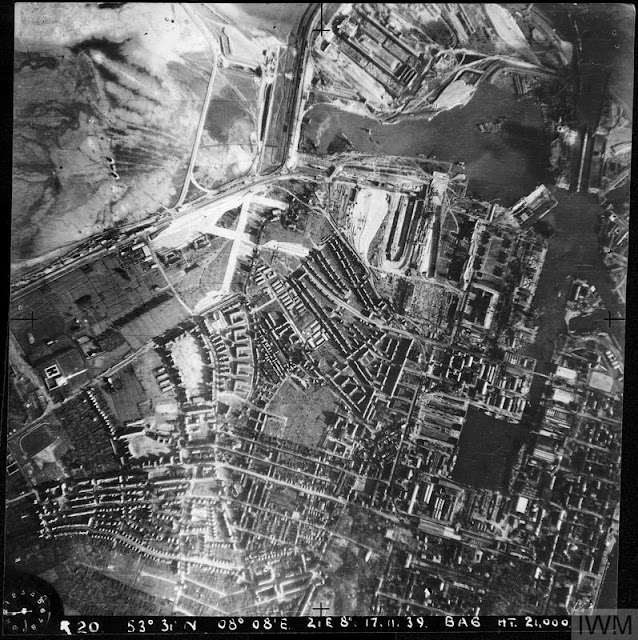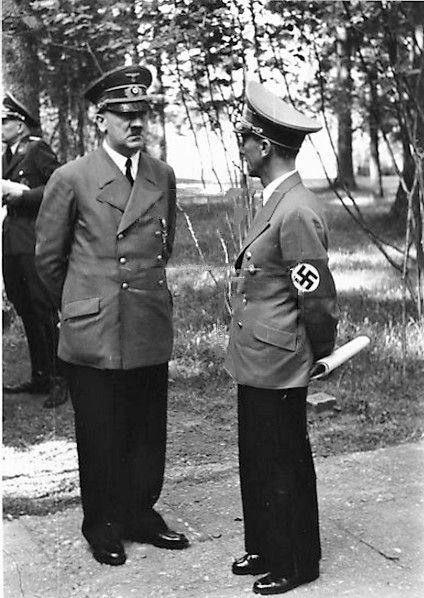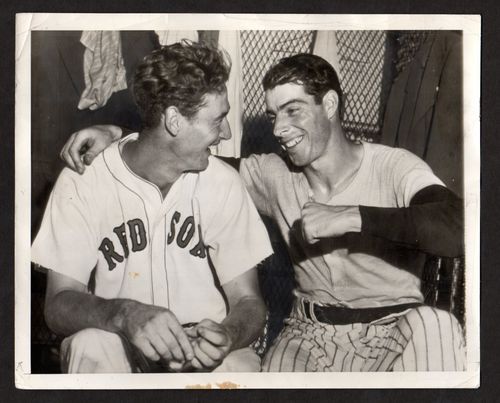Tuesday 8 July 1941
 |
| Finnish tank crew with captured T-8, July 8, 1941 (Photo: SA-Kuva). |
In the Army Group North sector, the Germans of General Reinhardt's 41st Panzer Korps, 4th Panzer Group (Colonel General Erich Hoeppner) reach Pskov. The city sustains extensive damages, including the medieval citadel. This is the first major penetration of the Stalin Line. A little to the north, General Dietl's Army of Norway is stopped after establishing a bridgehead over the Litsa River, well short of its objective of Murmansk.
 |
| Field Marshal Fedor von Bock, Colonel Walther von Hünsdorff (hidden), Colonel-General Hermann Hoth, Colonel-General Wolfram von Richthofen. (Moosdorf/Mossdorf, Federal Archives, Bild 101I-265-0048A-03). |
In the Army Group South sector, German Panzer Group 1 and Sixth Army meet a Soviet counterattack at Kishinev by Soviet 5th Army. The Germans simply reorient their advance slightly to the north.
Luftwaffe ace (7 victories) Walter Margstein of JG 53 is killed in action.
Syrian/Lebanon Campaign: Australian 2/3rd Battalion and 2/5th Battalion of 7th Division cut the road from Damour north to Beirut. In addition, in the south, 2/2nd Pioneer Battalion and units of 6th Divisional Cavalry Regiment march north along the coast road.
Vichy General Henri Dentz, the commander of French forces in the Levant, has seen enough. Even though Damour itself still holds out, the Australian advance around Damour has made the defense of Beirut problematic. Dentz quietly seeks terms for peace.
 |
| "RAF aerial photograph of Wilhelmshaven." © IWM (HU 91200). |
The RAF is unhappy with the results and makes clear that future bombing runs are to be conducted as formations rather than individually. The crews complain of various shortcomings of the bombers, including difficulties using the Norden bombsight and inadequate defensive armament.
RAF Fighter Command sends Circus missions to attack the Lens power station (13 fighter squadrons, one bomber lost) and Lille (19 fighter squadrons, 7 losses). The RAF also sends a sweep over northern France.
After dark, RAF Bomber Command attacks Muenster (51 bombers) and Hamm (73), Biefeld (33), and Merseburg (14).
The Luftwaffe sends a night raid against Great Yarmouth, Norfolk.
 |
| Fortress B.I AN530, WP-F (U.S.A.A.F. B-17C 40-2066) in RAF service (Royal Air Force). |
German 460-ton converted minesweeping trawler M-1104 Jan Hubert collides with another vessel off southwest Norway and sinks.
Convoy HG-67 departs from Gibraltar bound for Liverpool.
Canadian corvette HMCS Shediac (Lt. Commander Lt. John O. Every-Clayton) is commissioned.
U-86, U-161 and U-656 are commissioned.
Battle of the Mediterranean: Royal Navy submarine HMS Torbay surfaces east of the island of Kithera (Kythera), Greece and uses its deck gun to sink German freighters LXIV and LI.
Royal Navy cruiser HMS Cornwall hits a wharf in Durban and sustains damage to its stem.
At Malta, the Italian Regia Aeronautica sends bombing missions against various points. An RAF Hurricane shoots down an Italian BR-20 "Stork" medium bomber south of the island.
 |
| "Boeing Fortress Mk I of No. 90 Squadron RAF based at West Raynham, Norfolk, 20 June 1941." © IWM (CH 2873). |
- Italy obtains: Dalmatian coast and some related islands, part of Slovenia, and rule over an expanded Croatia ("Great Croatia") as an "independent kingdom" via new king the Duke of Savoy
- Hungary: the Backa and Baranya triangle
- Germany: Serbian and Banat administration via puppet government, plus garrisons the remainder of Slovenia
- Bulgaria: part of Macedonia
- Albania: the remainder of Macedonia
- Montenegro: independence
Italian troops bear the brunt of occupation duty in the Balkans, including most of mainland Greece (the Germans occupy the remainder of mainland Greece and the islands of Lesbos, Chios, Samos, Melos, and Crete). Bulgaria, which is of little help on the main front, occupies eastern Macedonia and part of western Thrace.
Hitler approves all this because divvying up an area of no interest to him binds his satellites closer to Germany. On a more practical level, it also removes the need for Wehrmacht troops to police the populace, and already the partisans are stirring. Romania has been promised extensive new holdings in the east, some of which already have been conquered.
 |
| The Italian Embassy, Berlin. Note the blacked-out headlights and equipment for emergency lighting, in accordance with blackout regulations (Proietti, Ugo, Federal Archives, Bild 212-061). |
Winston Churchill's first personal message to Soviet Premier Joseph Stalin arrives in Moscow. Churchill boasts about RAF Bomber Command's attacks on Germany and promises, "The longer the war lasts the more help we can give."
German/US Relations: The American Embassy in Berlin arranges the release of American journalist Richard C. Hottelet. Arrested on espionage charges on 15 March 1941, Hottelet is a member of the so-called Murrow Boys, U.S. war correspondents recruited by CBS on-air reporter Edward R. Murrow. Hottelet soon heads for Lisbon, where he can catch a flight to London.
US/Japanese Relations: Japanese Foreign Minister Matsuoka Yosuko sends a diplomatic note to US Ambassador to Japan Joseph Grew. It states that Japan desires peace and wishes to prevent the spread of war from Europe to the Pacific.
 |
| Hitler with Propaganda Minister Joseph Goebbels at the Wolfschanze in Rastenburg, East Prussia, 8 July 1941. |
US Military: Patrol Wing 8 (Fleet Air Wing 8) is established at Naval Air Facility Breezy Point, Norfolk, Virginia. It later moves to Alameda, California.
While not technically a part of the US military, in substance it is an extension of the US Army Air Force. Today, pilots and staff of the American Volunteer Group (actually employed by a shell company) depart San Francisco for the Far East aboard Java Pacific liner "Jaegerfontein."
In Memphis, Tennessee, Army Major General Benjamin Lear, Commander of US Second Army, happens to observe some of his troops whistling at women passers-by while driving by. Lear makes all 350 men in the convoy walk the remaining 15 miles (24 km) to their destination. The troops' commander, Major General Ralph E. Truman (cousin of Harry), attempts to get Lear "retired" but fails. From this point forward, the rank and file call him "Yoo-hoo Lear."
Battleship USS Arizona arrives at Pearl Harbor.
British Military: Cadet David George Montagu Hay receives the Albert Medal for Lifesaving. Hay - who later becomes the 12th Marquess of Tweeddale - jumped out of a lifeboat after the sinking of freighter SS Eurylochus by German raider Kormoran on 29 January 1941 to rescue an officer without regard to his own safety.
 |
| Reykjavik, Iceland, 8 July 1941. US Marines landed on 7 July in order to relieve British troops and allow them to return to England. |
Holocaust: Jews in the Baltic States are forced to wear the Yellow Star of David badge.
Soviet Homefront: The government institutes food rationing in major cities.
American Homefront: John D. Rockefeller, Jr. makes a speech to the Selective Service Parents and Neighbors Committee of the United Service Organizations that is broadcast over radio station WMGA in New York. He lists "the things that make life most worth living," which are all beliefs. These are:
- "the supreme worth of the individual"
- "Every right implies a responsibility; every opportunity, an obligation, every possession, a duty"
- "the law was made for man and not man for the law"
- "the dignity of labor"
- "thrift"
- "Truth and justice"
- "sacredness of a promise"
- "the rendering of useful service"
- "an all-wise and all-loving God"
- "love"
 |
| Ted Williams and Joe DiMaggio at the All-Star Game held on July 8, 1941. |
July 1941
July 1, 1941: US TV Broadcasting Starts
July 2, 1941: MAUD Report
July 3, 1941: Stalin Speaks
July 4, 1941: Pogroms in Eastern Europe
July 5, 1941: Germans on Schedule
July 6, 1941: Australians Attack Damour
July 7, 1941: US Marines in Iceland
July 8, 1941: Flying Fortresses In Action
July 9, 1941: British Take Damour
July 10, 1941: Sword and Scabbard Order
July 11, 1941: Cease-fire in Syria and Lebanon
July 12, 1941: Anglo/Russian Assistance Pact
July 13, 1941: Uprising in Montenegro
July 14, 1941: Katyusha Rocket Launchers in Action
July 15, 1941: Smolensk Falls
July 16, 1941: Stalin's Son Captured
July 17, 1941: Heydrich Orders Mass Executions
July 18, 1941: Twin Pimples Raid
July 19, 1941: V for Victory
July 20, 1941: The Man Who Wouldn't Shoot
July 21, 1941: Moscow in Flames
July 22, 1941: Soviet Generals Executed
July 23, 1941: Secret Plan JB 355
July 24, 1941: Operation Sunrise
July 25, 1941: US Naval Alert
July 26, 1941: Italian E-Boat Attack on Malta
July 27, 1941: MacArthur Returns
July 28, 1941: Auschwitz Exterminations
July 29, 1941: Rescue From Crete
July 30, 1941: Raid on Petsamo and Kirkenes
July 31, 1941: Final Solution Order
2020
No comments:
Post a Comment